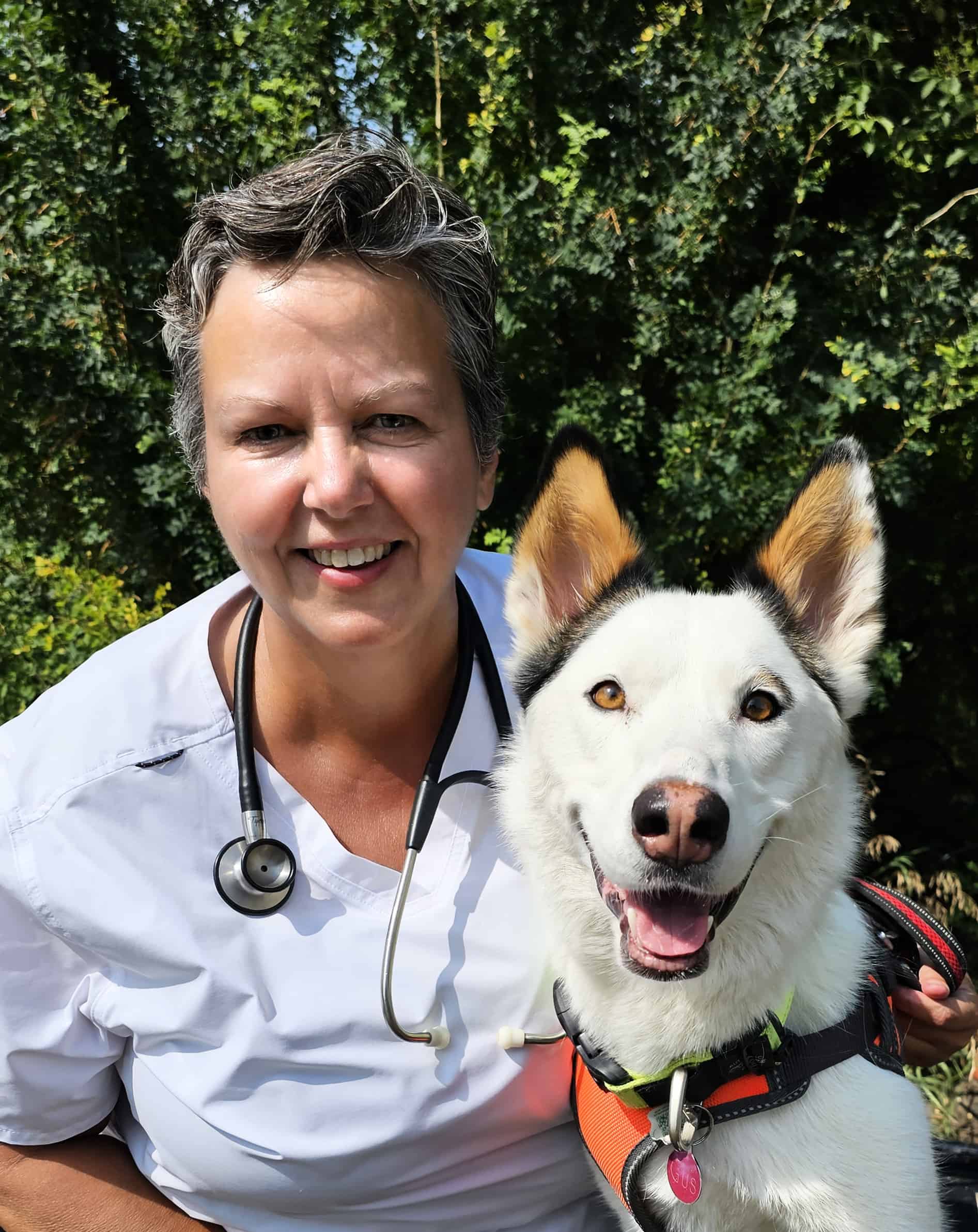Getting a new kitten is always an exciting event. They add so much fun and joy to our lives. But what do you need to get ready to bring a new kitten into your home?
There are a few basic things that you will need before bringing your new kitten home: a cat carrier to bring them home safely, kitten food, food and water bowls, a litter tray, and litter. Many of the other needed items can wait until your kitten is settled in its new home.
What do you need right away, and what can wait a bit? This new kitten checklist will help you decide what you need to purchase to get ready to bring your new kitten home.
[Related: How Long Does a Kitten Stay a Kitten?]
New Kitten Checklist
Things to buy before bringing your kitten home
Cat Carrier
Litter Box
Cat Litter
Kitten Food
Food and Water Bowls
Item To Buy After Kitten Arrives Home
Cat Trees and Scratching Furniture
Cat Toys
Cat Bed
Cat Collar
Id Tag
Leash and Harness
Cat Nail Clippers
Grooming Brush or Comb
Enzyme Based Cleaner
Cat calming pheromone spray
Cat treats
Ongoing Expenses To Plan For
Veterinary Care
Pet Insurance
Vaccinations
Spaying/Neutering
First Things First – The Kitten
Maybe you’ve already found your new cat or kitten and are here looking for information on how to get ready to bring it home. Or maybe you have decided you are going to get a new kitten but haven’t actually found one yet.
If you are looking for a new kitten, my recommendation is to always check out your local pet shelters first. There are always kittens in need of new homes and you never know, you may just find the perfect new furry family member.
Kittens from pet shelters are usually up to date on their vaccinations and vet visits, so you know that your new kitten is healthy. They may also have additional information about the kitty’s personality, which can be helpful when making a decision about adoption.
Of course, you can also find a “free” kitten on online buy-and-sell pages, or from friends and family. These kittens usually have not had any sort of veterinary care and will need a vet check, deworming, and vaccinations – so they are not really free, after all.
If you are looking for a purebred cat, such as a Bengal or a Sphynx, I strongly recommend that you buy from a reputable breeder. Reputable breeders will usually health test their cats, vaccinate them and provide you with a written health guarantee.
I recently got a new kitten, and I didn’t listen to my own advice. I purchased a Bengal kitten from someone who wasn’t a breeder but still had a pair of intact purebred cats which, of course, equals kittens. Naturally, it hadn’t had any vet checks or vaccinations.
When I got the kitten home and examined it, I discovered that its poor ears were a mess with ear mites. A vet visit later for ear cleaning, ear mite medicine, deworming, and first vaccinations, this kitten cost me several hundred dollars in medical care in the first week!
(Yes, I am a veterinarian and I should have been able to do all this myself. But Bengal kittens can be wild! Two experienced people were needed to get the job done properly.)
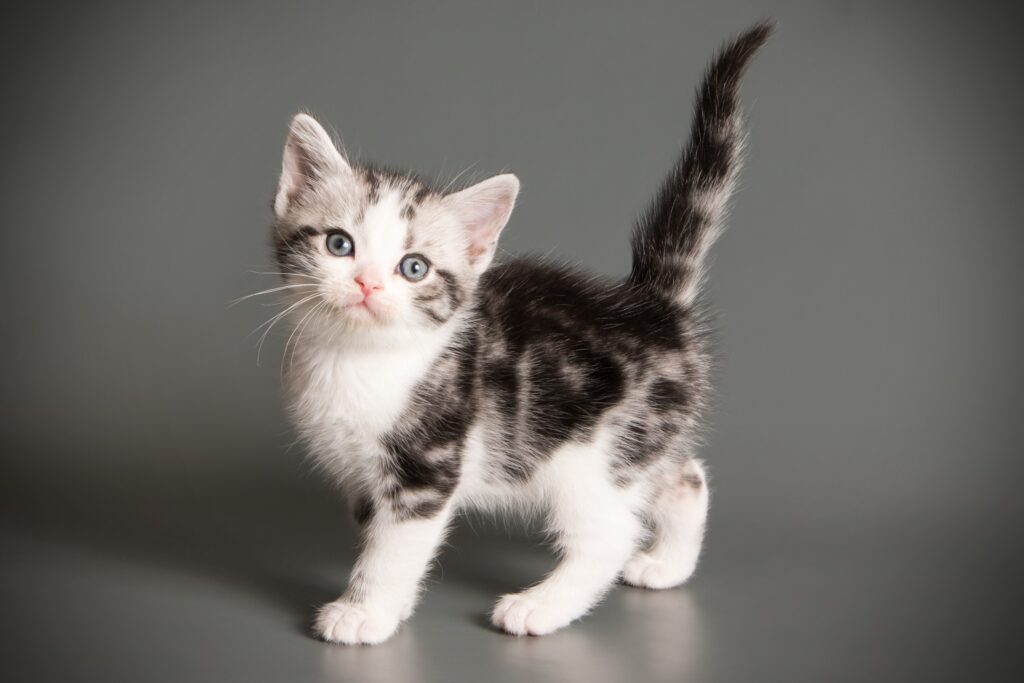
New Kitten Checklist – The Essential Supplies
Cat Carrier
This is the first item your new kitten will need. Cats and kittens don’t like to travel, so a secure travel carrier will help make sure they get home safely. Also, in many jurisdictions, it is now law that pets be restrained inside moving vehicles so that they don’t distract the driver.
It’s a good idea to buy a carrier that will be big enough to comfortably hold your cat once it is fully grown. Your tiny kitten may look lost and too small in it right now, but that will soon change as they grow quickly!
Litter Box
The next item on your new kitten checklist is a litter box. Make sure to get a litter box that is big enough for your new pet, so they have plenty of room to move around in it even when they are grown.
There are several types of litter boxes available, each with its own set of features designed to suit different needs, preferences, and living situations. Here’s a brief overview of the various options:
Open Litter Boxes
- Description: These are the simplest form of litter boxes, essentially shallow trays without a cover. They’re easy to access for cats and straightforward to clean for owners.
- Best For: Cats who dislike confined spaces or households where odors can be managed easily. They’re also among the most affordable options.
Covered or Hooded Litter Boxes
- Description: These boxes have a lid or dome over the tray, providing privacy for cats and helping to contain odors and litter scatter.
- Best For: Owners looking to minimize odors and litter tracking, as well as cats who prefer privacy. They can be slightly more expensive than open boxes.
Self-Cleaning Litter Boxes
- Description: Equipped with mechanisms that automatically sift and remove waste into a separate compartment after your cat uses it. These require electricity or batteries to operate.
- Best For: Owners who want to reduce the frequency of manual scooping, especially those with busy schedules. These are the most expensive options.
Top-Entry Litter Boxes
- Description: These boxes have an opening on the top, requiring cats to jump in and out. This design helps reduce litter tracking and offers a degree of privacy.
- Best For: Agile cats and owners looking to minimize litter scatter. Not suitable for older or less mobile cats.
Disposable Litter Boxes
- Description: Made from biodegradable materials, these boxes are designed for temporary use and can be thrown away after a certain period.
- Best For: Travel, temporary setups, or as a low-maintenance option. They’re eco-friendly but less cost-effective in the long run.
Corner Litter Boxes
- Description: Designed to fit snugly into the corner of a room, these boxes help maximize space while still providing ample room for cats to use them comfortably.
- Best For: Small spaces or for keeping the litter box out of the way while maintaining easy access for the cat.
Furniture-Style Litter Boxes
- Description: Litter box furniture are creatively designed to blend with your home’s decor, often looking like a normal piece of furniture that hides the litter box within.
- Best For: Owners looking to integrate the litter box seamlessly into their home without it standing out as a pet product.
Choosing the right litter box depends on your cat’s preferences, your budget, and your household’s specific needs. It might take some experimentation to find the perfect match, but the right litter box can make a big difference in your and your cat’s comfort and happiness.
Cat Litter
Of course, the best litter box in the world doesn’t do a lot of good without good cat litter. There are many options for cat litter, and it can be confusing, to say the least.
If your litter box cleaning strategy is to empty it all once a week and start fresh, without daily scooping, then you don’t need clumping litter. For non-clumping litter, my preference is for natural or recycled products.
However, if your cleaning strategy like mine is to clean lumps daily and do a full litter replacement monthly, then a clumping litter is a must. Look for a litter that has a low dust content and does an excellent job of controlling odors. I highly recommend unscented litter for all cats, as they are just as prone as people to having allergies to fragrances.
Of course, it’s not always about what we like, it’s about what the cat likes. If you have a picky cat or kitten, you might need to experiment with a few different ones until you find the right one for her.
Whichever litter you choose, make sure to get enough for at least a month or two so that you don’t have to worry about running out.
Oh, and don’t forget to pick up a scoop!
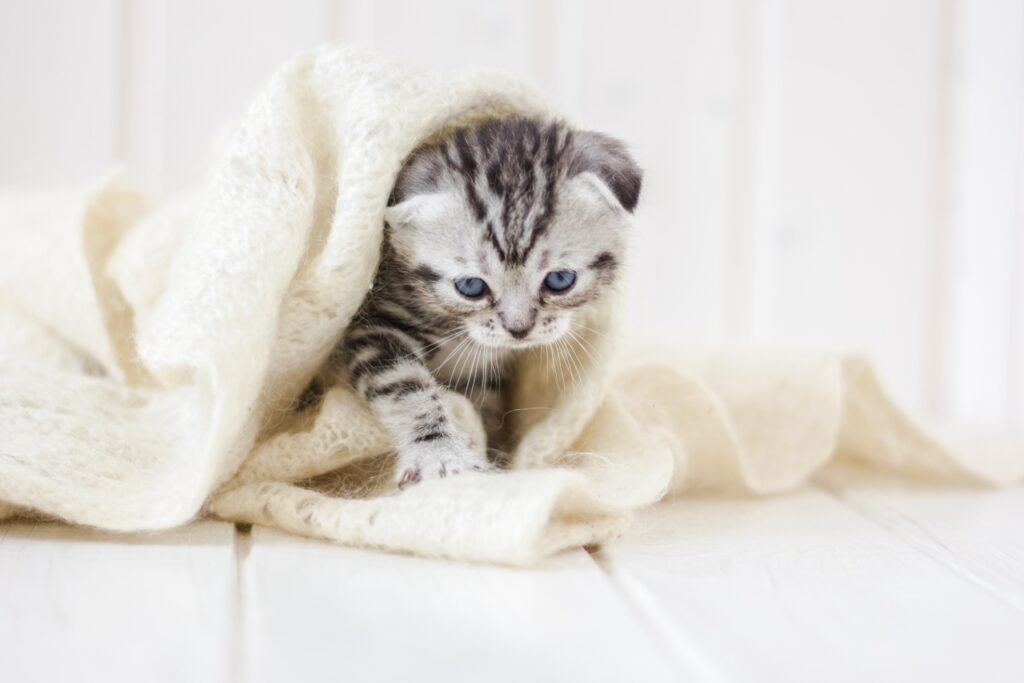
Kitten Food
The first thing you need to do when getting a new cat or kitten is to find out what food the previous owner is feeding them. You don’t want to suddenly change their food or you can wind up with a sick pet.
Switching Your Kitten To A New Diet
Of course, the easiest thing is to keep feeding them the same food, but this doesn’t always work out. Maybe their old food isn’t available where you live, or maybe the breeder was feeding a special diet that isn’t practical for most pet owners.
To change your kitten or cat’s food, start by mixing in 25% of the new food with 75% of the old food. Feed that for three days, then slowly start adding more of the new food. By day 7 you should be up to a 50:50 mix.
Feed the 50:50 mix for a few days to make sure your cat is tolerating the new food well, then start slowly increasing the percentage of new food. By the end of the second week, 100% of their diet should be the new food.
What Kind Of Food Should I Be Feeding My Kitten?
It is important to feed kittens a balanced diet of high-quality cat food specially formulated for growing kittens. Kittens have different nutritional requirements than adult cats and need food that is high in protein, fat, and other essential vitamins and minerals.
Kittens can start eating dry food at about seven weeks of age. So once your kitten comes home it should be ready for dry food. If it hasn’t been eating dry food yet, slowly transition it to as I described above.
Kittens can thrive on dry kitten food alone as it provides all the necessary nutrients for their growth and development. However, incorporating wet food into their diet is perfectly fine and can offer benefits, including increased water intake which is crucial for maintaining good hydration and supporting urinary tract health. Wet food can also add variety to their diet, making mealtime more appealing for kittens.
Don’t forget, your kitten will need water as well. Once they are weaned they no longer need milk as a source of nutrition, but they do need access to clean, fresh water at all times. A cat water fountain is popular with most cats.
Water and Food Bowls
To be honest, the type of food dishes you get for your new kitten is mostly about personal preference. Just about any container will do, so long as it is easy to clean.
However, you will probably want dishes that are dedicated to cat food alone. If you want to buy pet food dishes, you can find them in many styles in ceramic, metal, or plastic and in styles that will match your home décor.
But if you want something a bit more practical try looking at some stainless steel bowls that won’t absorb odors like plastic. Plastic dishes are sometimes implicated in causing feline acne, so I recommend stainless steel or ceramic whenever possible.
You might find that your cat has a preference for dishes that are raised off the floor. Lowering their head to the floor to eat can make some cats feel vulnerable. I found that my rescued Sphynx cat was much more comfortable eating after I got her a raised food dish.
Cat Trees And Scratching Furniture
It’s important to provide your new kitten with some cat-friendly furniture for them to explore and play on. Scratching is a natural behavior that they must do, so give them a safe place to do it. Cat trees, scratching posts, and tunnels are all great choices for new kittens.
I have several of these around my own house. The tall, multi-level cat tree gets the most use. I also have a cardboard scratching pad in almost every room, which also gets frequent use and shorter scratching post that is less used but still important for keeping my cat’s claws off of my furniture.
My Bengal kitten loves the cat tree, as she loves to climb, jump and get as high as possible. That said, I am probably going to have to get something bigger and more challenging soon, or else the top of my cupboards is going to be her next goal.
Cat Toys
Cats being cats, need a variety of toys to keep them stimulated, entertained, and exercised. Look for safe and interesting toys that encourage play, exploration, and exercise. Toys such as wand toys, feather teasers, and balls with bells inside them are all great choices.
I have quite the collection of these at my house. My new kitten loves chasing after anything with feathers. Her current favorite is a rattan ball with feathers and bell. My Sphynx, on the other hand, won’t even look at them and instead prefers nerf-type foam balls.
The most popular toys in our house didn’t cost a thing: cardboard boxes and toilet paper rolls! A close second is a clear plastic soup takeout container with a couple of marbles sealed inside.
There is no tried-and-true toy that every cat will absolutely love. It’s up to you and your new kitten to find the right toys. But whatever you do, make sure that all of the toys are safe for them.
Note that catnip toys are wasted on kittens, as they do not start to react to catnip until about 6 months of age. And when you do start using catnip toys, they don’t have to be expensive. My cats’ favorite catnip toy is an old sock that I put catnip into and then tied a knot in it!
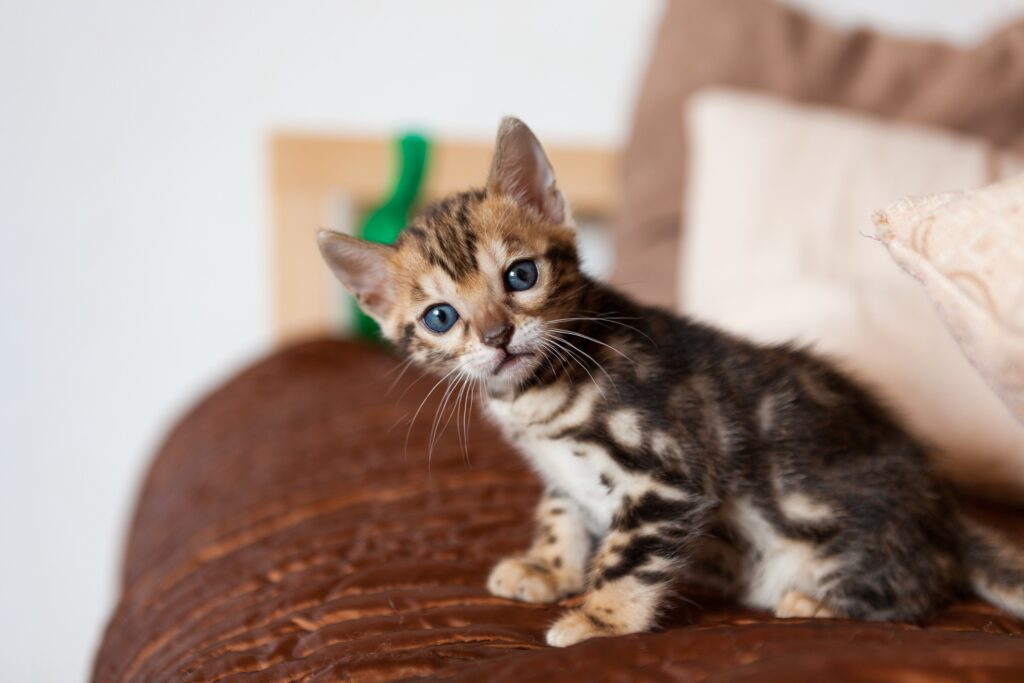
Cat Bed
A cat bed is not a must-have, and in fact, your cat’s preferred bed will probably be yours. But if you want to train your cat to NOT sleep in your bed, it is helpful to have a bed they can call their own.
Cat beds come in all shapes and sizes. The key is to look for something that is comfortable and cozy for your new kitten. I like the round, hooded beds because they make cats feel secure, much like a cave or den.
Cats of all kinds also love a heated bed, especially in colder climates. When I got my Sphynx I was worried about her getting too cold, so I bought her a heated pet bed. It is constantly heated by a pet-safe heating pad, and she does tend to spend a lot of time in it.
Other Supplies For Your New Kitten
There are a few other supplies you should have on hand for your new kitten, or want to at least consider:
- Nail clippers to keep your kitten’s nails trimmed
- Grooming brush, comb, or gloves
- Cat-safe cleaning products such good quality enzyme-based cleaner for litter box accidents
- Breakaway collar – this should be an adjustable collar so you can resize it as the kitten grows
- ID tag to attach to the kitten’s collar, with your contact information inscribed
- Lease and harness – this is an essential requirement if you are going to be traveling with your cat or taking it for walks
- Calming cat pheromone spray to help your new kitten settle into her new home easier and calm her in other times of stress
- Cat treats
Other Expenses to Plan for When Welcoming a New Kitten
Besides the initial supplies needed for your new kitten, it’s important to budget for longer term or ongoing expenses.
Veterinary Care
Routine veterinary checkups are vital to monitor your kitten’s health and prevent common diseases. These checkups often include physical examinations, dental assessments, and consultations on diet and weight management. While the cost can vary depending on your location and the vet’s services, budgeting for annual or semi-annual visits is a wise choice.
Pet Insurance
Pet insurance is an option worth considering to help manage unexpected veterinary costs. It can cover a range of services from emergency treatments to routine care, depending on the policy.
While it represents an additional monthly cost, pet insurance can significantly reduce the financial burden of major medical procedures or treatments that may arise. It’s important to research and choose a policy that best suits your needs and budget, as coverage and costs can vary widely.
Vaccinations
Vaccinations play a crucial role in protecting your kitten from various infectious diseases. The initial series of vaccinations typically occurs within the first few months of their life, followed by booster shots according to veterinary recommendations.
These are important not just for your kitten’s health but also for the wellbeing of other pets and, in some cases, humans. While costs can vary, ensuring your kitten is vaccinated is a non-negotiable part of responsible pet ownership.
Spaying/Neutering
Spaying or neutering your kitten is not only a responsible decision to prevent unwanted litters; it also has health benefits, including reducing the risk of certain cancers and behavioral issues.
This one-time expense is an important investment in your kitten’s long-term health and happiness. Most veterinarians offer spay/neuter services, and there are often low-cost clinics available to help manage this expense.
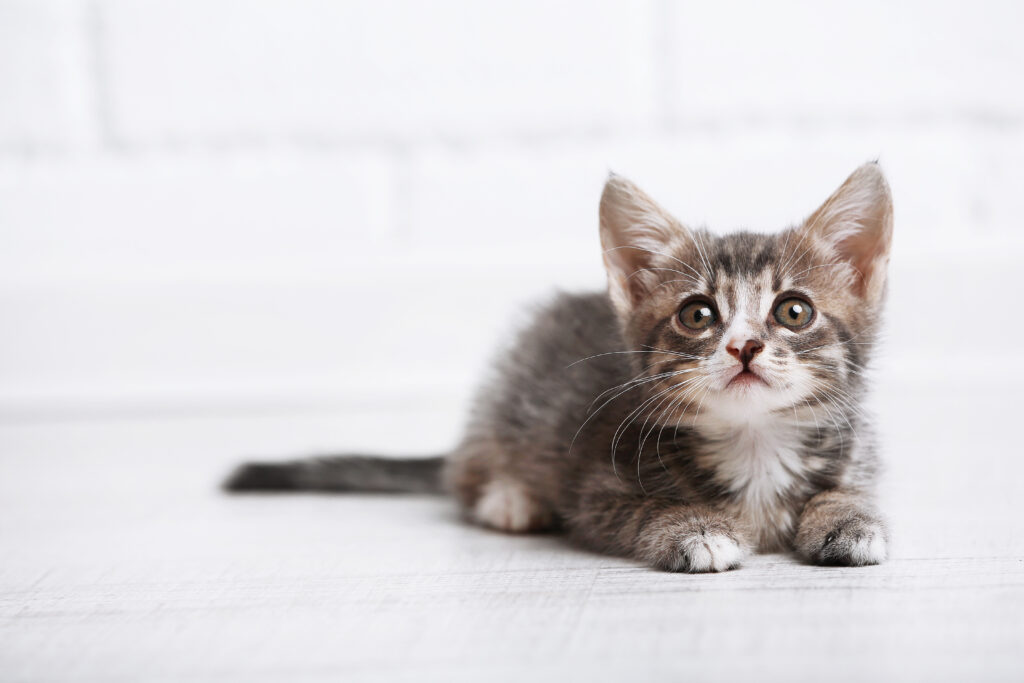
Wrapping Up
Now that we’ve come gone through everything you might need to get ready for your new kitten, I’ve come to a realization – I’ve spent a LOT on my two cats over the last 9 months!
However, you don’t need to spend what I did, nor do you need to buy everything at once. Start with the basics, and then see what your new kitten takes a liking to.
The other items in the kitten essentials checklist in this article can be purchased later, on an “as-needed basis”. You can also look for gently used second-hand items, just make sure everything is thoroughly cleaned and disinfected before bringing it into your home.
Thanks for reading this new kitten checklist! Have fun with your new kitten, and don’t forget to share lots of cuddles and love. Enjoy the journey!
Editors Note: Is your new kitten a girl? If you are looking for a name for her, head on over to our article on names for girl cats, where we list 900 potential girl cat names.
[Image credit: All images are used under license or with permission]



